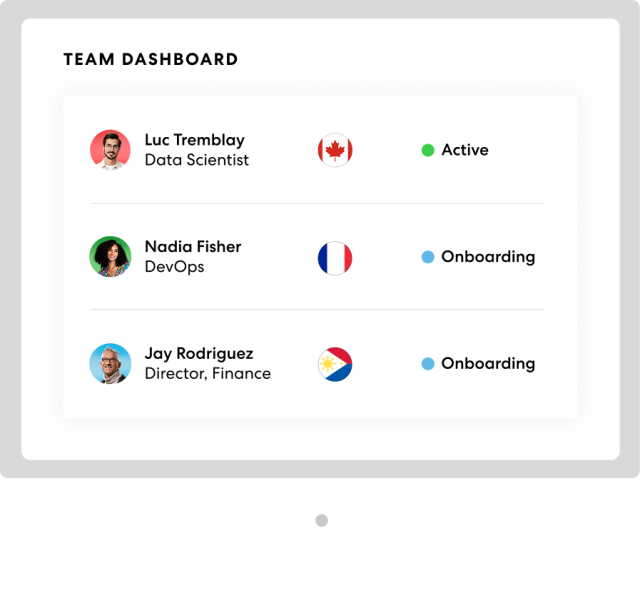Employer of Record der Extraklasse
Wir freuen uns, dass Velocity Global in 2023 gleich dreifach von NelsonHall ausgezeichnet wurde. Mit unserem umfassenden Angebot bieten wir unseren Kund*innen nachhaltigen Mehrwert und konnten uns so gegen andere EOR durchsetzen.

Top-Talente weltweit einstellen
Mit Velocity Global als Employer of Record (EOR) steht Ihrem Dream-Team nichts mehr im Weg. Mit uns als Partner können Sie die besten Leute weltweit einstellen, müssen sich um Compliance keine Sorgen machen – und können ungebremst weiter wachsen.

Verlässliche Vergütung
Vertrauen Sie auf eine erprobte, zentralisierte Lösung, um Ihre Teammitglieder auf der ganzen Welt korrekt und rechtskonform zu bezahlen.

Demo der Global Work Platform ansehen
Erfahren Sie, wie Sie mit der Global Work Platform™ Talente schnell und compliance-gerecht einstellen und neue Märkte erschließen können.

Glückliche Mitarbeitende sind loyale Mitarbeitende
Mit unserer Hilfe können Sie Top-Talenten überzeugende Zusatzleistungen und Boni bieten und sie ans Unternehmen binden.
Weltweite Benefits
Bieten Sie Ihrem Team umfangreiche und flexible Kranken- und Lebensversicherungen.
Weltweites Equity-Programm
Mit unserem Equity-Programm können Sie Ihr Team weltweit compliance-gerecht belohnen.
Internationale Relocation
Unterstützen Sie Ihre Mitarbeitenden bei der Relocation und der Beantragung von Visa.
Internationale Altersvorsorge
Unterstützen Sie Ihre Mitarbeitenden mit flexiblen Vorsorgelösungen dabei, ihre Zukunft abzusichern.
Mit unserer Expertise und Unterstützung kommen Sie international weiter.
Weltweites Know-how
Tools für globale Teams
Unterstützung für Ihr Team
Die Zukunft der Arbeit mitgestalten
Weiterkommen mit Velocity Global
Blick über den Horizont – Unsere Ressourcen
Mehr über grenzübergreifendes Recruiting
Erfahren Sie alles über internationale Payroll, Benefits und Compliance sowie über unsere Preise.








